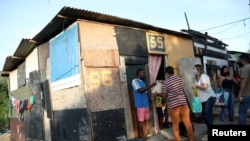The International Labor Organization reports more than 4 billion people globally have no social protection at a time when the COVID-19 pandemic is wreaking havoc upon their lives and livelihoods.
The ILO's World Social Protection Report 2020-2022 reveals the extent to which COVID-19 has devastated the world of work. It exposes the inequality between the rich countries that are beginning to rebound from the economic distress of the pandemic and the developing countries that remain deeply mired in poverty.
Additionally, the report finds less than half the world's population, or 47 percent, is covered by at least one social protection benefit, while 4.1 billion people, or 53 percent, have no income security at all.
The report highlights some of the significant regional inequalities in social protection. For example, ILO Director General Guy Ryder notes that in Europe and Central Asia, 84 percent of the population has at least one social protection benefit. In Africa, just 17.4 percent of the population has coverage.
"The vast majority of children globally, 73.6 percent, receive no social protection benefits," he said. "Only 44.9 percent of pregnant and child-bearing women receive a cash maternity benefit. Just 39 percent of the working-age population is legally entitled to sickness benefits. Think what that means in pandemic conditions."
While most retired workers receive an old-age pension, the report finds their benefits often are not enough to make ends meet. Ryder says gaps in social protection, such as the lack of sickness and employment benefits, can undermine other essential policy priorities, such as those surrounding public health.
"The crisis has confirmed the urgent need for a basic level of social security for all — what we call a social protection floor. We must do more to ensure that everyone has a legally guaranteed access to adequate social protection throughout their life cycle," he said.
The report outlines several priority actions to achieve this, including calling for national social security policies to be reinforced and for adequate social protections to be extended to workers in all types of employment.
The ILO says gaps in social protection must be closed, especially for women, for people in the informal economy and for migrant workers.









